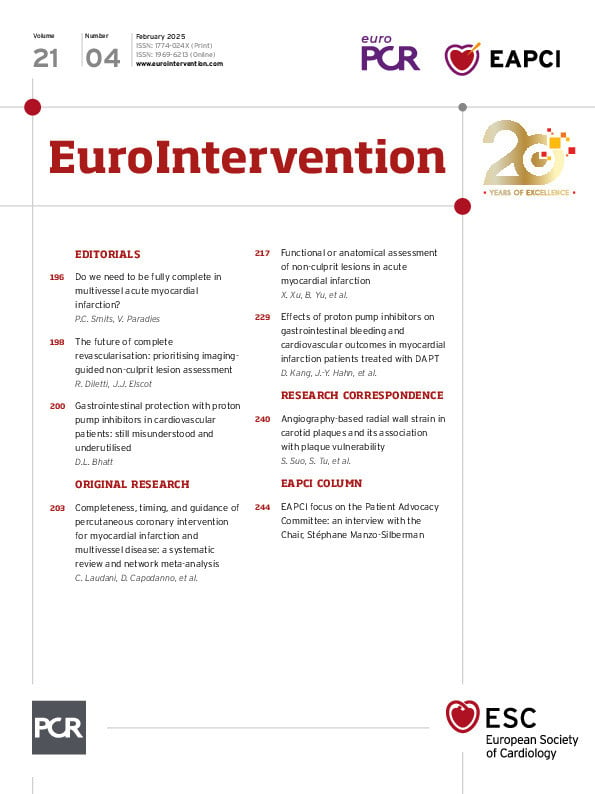Abstract
Background: Previous studies have reported the value of quantitative flow ratio (QFR) to assess the physiological significance of non-culprit lesions (NCLs) in acute myocardial infarction (AMI) patients and of optical coherence tomography (OCT)-defined thin-cap fibroatheroma (TCFA) to identify non-culprit vulnerable plaques.
Aims: We sought to systematically compare long-term NCL-related clinical prognosis in an AMI population utilising acute Murray fractal law-based QFR (μQFR) values and OCT-defined TCFA.
Methods: Three-vessel OCT imaging and μQFR assessment were conducted in 645 AMI patients, identifying 1,320 intermediate NCLs in non-infarct-related arteries. The primary endpoint was a composite of cardiac death, NCL-related non-fatal myocardial infarction (MI), and NCL-related unplanned coronary revascularisation, with follow-up lasting up to 5 years.
Results: The primary endpoint occurred in 59 patients (11.1%). OCT-defined TCFA independently predicted patient-level (adjusted hazard ratio [HR] 3.05, 95% confidence interval [CI]: 1.80-5.19) and NCL-specific primary endpoints (adjusted HR 4.46, 95% CI: 2.33-8.56). The highest event rate of 29.6% was observed in patients with NCLs that were TCFA (+) with μQFR ≤0.80, compared to 16.3% in those that were also TCFA (+) but with μQFR>0.80, 6.0% in those that were TCFA (–) with μQFR ≤0.80, and 6.6% in those that were TCFA (–) with μQFR>0.80 (log-rank p<0.001). TCFA was an independent predictor for the primary endpoint in ST-segment elevation MI (STEMI; adjusted HR 3.27, 95% CI: 1.67-6.41) and non-STEMI (adjusted HR 3.26, 95% CI: 1.24-8.54) patients, whereas μQFR ≤0.80 was not.
Conclusions: When assessing NCLs during the index procedure in AMI patients, OCT-defined TCFA serves as the dominant prognostic predictor for long-term clinical outcomes, rather than μQFR-determined physiological significance.
Sign up for free!
Join us for free and access thousands of articles from EuroIntervention, as well as presentations, videos, cases from PCRonline.com

